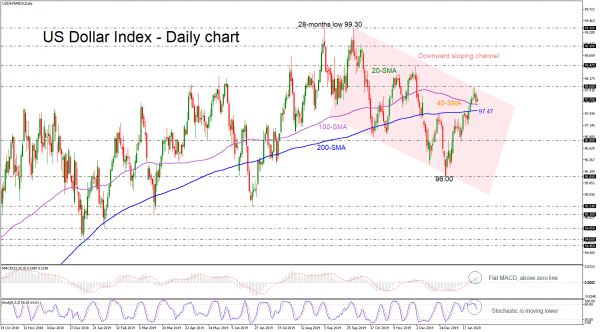The US dollar index bounced off the upper boundary of the downward sloping channel at the 98.00 psychological level and fell towards the 100-simple moving average (SMA). The price is exposing to downside risks and the first clue is the lower highs and the lower lows registered below the 28-month peak of 99.30.
In terms of momentum, the short-term bias is currently viewed as neutral-to-negative as the MACD is flattening above its zero line and the stochastic is moving lower after the bearish cross within the %K and %D lines in the overbought zone.
Should the index decline beneath the 100-day simple moving average (SMA), the spotlight would turn slightly downwards to the 200-day SMA at 97.47. Breaking that line, the selling interest may next pause at the 96.80 barrier, taken from the latest bottom on 96.80. Steeper downside move would open the door for the 96.00 handle, while any violation would add more confidence to the recent trend, probably creating a new lower low somewhere near the 95.34 region.
If the buyers take control, the price could hit again 98.00 and then the 98.47 resistance, penetrating to the upside the bearish sloping channel. Even higher, the 28-month high of 98.90 could attract traders’ attention.
In brief, the US dollar index is expected to behave neutral-to-bearish in the short-term. Yet, with negative trend signals strengthening, the downtrend in the four-month window is likely to stay in place.













